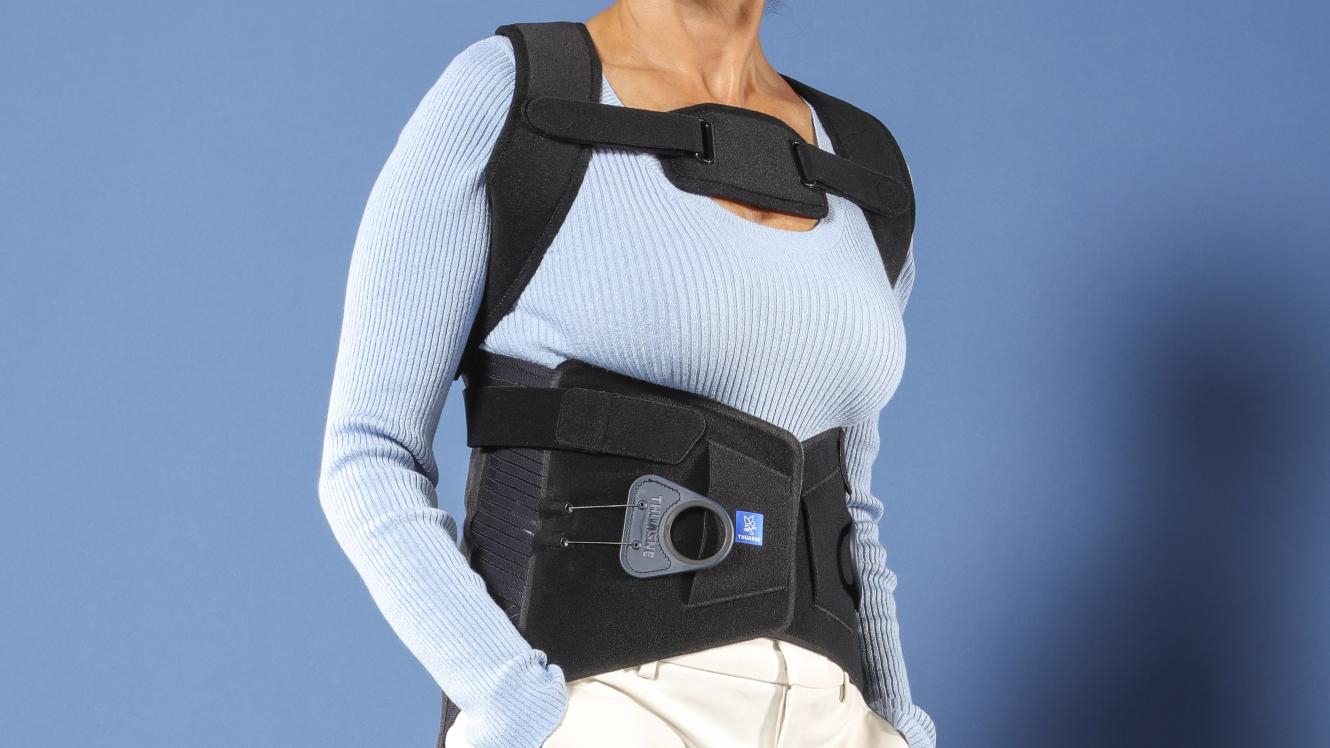The dorsal vertebrae
The longest part of the spinal column, the dorsal spine is mainly responsible for protecting the spinal cord. Relatively solid as it is supported by the ribs, it can nonetheless be the site of pain and discomfort. Working at a computer is often the cause of the problem!

The dorsal or thoracic spine has 12 vertebrae, running from the last cervical vertebra to the first lumbar vertebra, and presents a natural curvature known as kyphosis. Its role is to support the body and protect the spinal cord. The ribs are connected to the dorsal spine.
Mechanical pain experienced in the thoracic spine is termed “functional”. It primarily occurs between the shoulder blades. It is mainly muscular in origin and probably contains a stress component, but the precise mechanism remains unclear. It may be promoted by pre-existing spinal deviations.
Pain frequently associated with repetitive strain
It is primarily seen in women (17%1) working in jobs that involve postures putting strain on the upper back: computer work, secretarial work, sewing, hairdressing. In this context, it is often combined with neck pain. Dorsal pain can also be encountered in people in physical jobs required to carry heavy loads. Although this type of pain rarely leads to significant incapacity in day-to-day life, it is uncomfortable and made worse by activities putting strain on the dorsal vertebrae.
Treatments to relieve backache
The management of functional dorsal pain primarily consists of:
- painkillers and anti-inflammatories during painful flare-ups;
- physiotherapy, with correction of posture and strengthening of the muscles around the vertebrae;
- ergonomic changes at work or the wearing of a dorsal support belt;
- psychological support.
A specific case: dorsal disc herniation
This very rare condition is caused by a disc from one of the thoracic vertebrae bulging outside its space and putting pressure on the spinal cord. It results in pain of variable degrees, sometimes in the form of a “half-belt”, tingling and loss of strength and sensitivity in the lower part of the body. It is treated by a short period of rest, anti-inflammatory drugs and, sometimes, surgery.